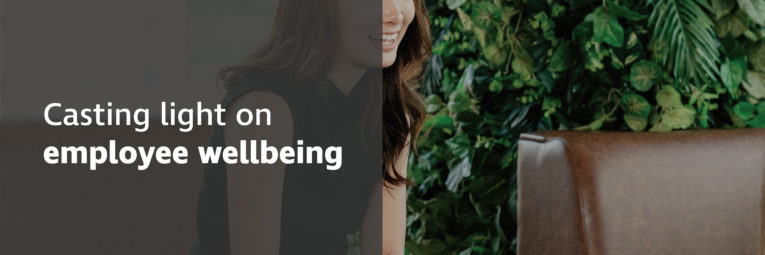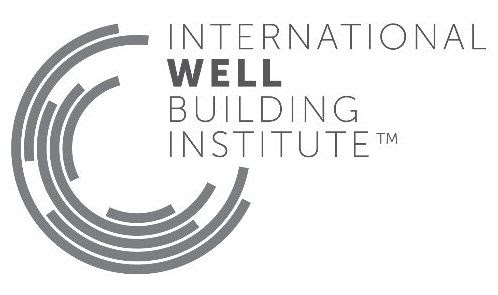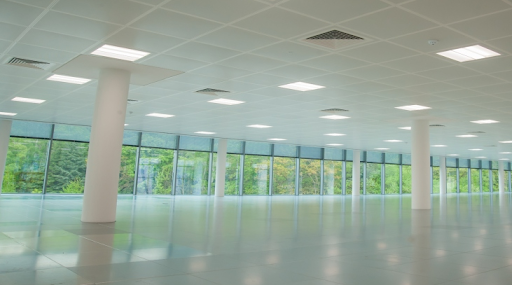
We have good news and bad news.
Let’s start with the bad news. In a 1981 study, Dr Charles Czeisler of Harvard Medical School found that indoor artificial lighting can suppress melatonin production, inducing adverse consequences: reducing quality of sleep, contributing to obesity, diabetes, depression, SAD, anxiety, cancer and other diseases such as Alzheimer’s.
Ready for the good news? Well, this study is thirty years old and smart lighting companies like Phi Lighting have been able to take these learnings and address them in stylish, creative and effective ways. The results of our endeavours are not only increased wellness but also enhanced work performance and productivity.
To help you understand the story properly, we need to take you back to the 19th century.
With electric light becoming widely available in the 1880s, humans began to move indoors for longer periods of time. A life once dominated by the sun, now centred around artificial light. While this was highly convenient, it created problems too.
The sun defines our natural circadian rhythm, waking us up and lulling us to sleep at the appropriate time. As the sun rises, light levels increase and shift towards cooler temperatures. While the setting sun creates lower light levels and a warmer glow.
These subtle natural changes tell our brain when to wake up and when to go to sleep. Throughout the day, daylight prompts our brain to release dopamine and serotonin, creating sensations of pleasure, alertness and impulse control. Cortisol also flows throughout the day enabling stress responses and decreases in the evening to relax us.
This might explain why, according to an international light and wellness study, workers in windowless environments reported higher physical problems, lower vitality, and poorer sleep quality. Reduced sleep quality can cause short-term impairments including memory loss, slower psychomotor reflexes, and diminished attention.
Most of us now spend 90% of our time indoors with artificial lighting increasing our chances of the dangerous side effects we referred to earlier. With the sun no longer guiding us, our bodies don’t know if they are coming or going.
This is one of the issues being addressed by the WELL Building Standard. Established by the International Well Building Institute, this is a performance-based system for measuring features of the built environment that impact human health and wellbeing, through air, water, nourishment, fitness, comfort, mind and, yes, light.
By placing people at the heart of design and working to the Well Building Standard, we can counter the side effects of ill-considered artificial lighting. The evidence is overwhelming; 92% of people who work in a Well Certified environment said it had a positive effect.

The Internet of Things (IoT) is a development of internet connectivity allowing everyday objects to send and receive data. It’s transforming the way we live, work and interact with our environments. The IoT is reshaping the lighting industry with smart and wearable devices designed for human interaction and is giving lighting companies like ours the capability to consider wellness considerations as part of the service we offer.
This has led to the universally-recognised concept of Human Centric Lighting (HCL). HCL is known to have positive effects for both the conscious and subconscious mind: influencing mood, behaviour, sleep patterns, and general well-being. Using HCL helps to reduce the debilitating and depressive behaviours of SAD, such as excessive sleepiness and fatigue.
A good example of our work in this area is the tailored solution that we’ve implemented at the Heights, a prestigious commercial property in Weybridge, Surrey. We used Circadian and HCL lighting with the health and wellbeing of the occupants being one of the principle considerations in the brief.

Implementing HCL in conjunction with the IoT can change how we live and work. It can be applied to any environment from our homes and offices to buildings focused on education, retail, travel, hospitality and healthcare.
Time spent in hospitals can keep patients away from natural lighting for extended periods of time. Yet, healing requires quality sleep. HCL, and more specifically, our own Tunable White Lighting (TWL), can help patients maintain regular sleeping patterns, while helping to keep medical professionals alert during long shifts.
TWL studies have found that exposing occupants to natural full-spectrum LED, which supports the human circadian rhythm, can increase overall well-being. The colour of white can be modulated from warm to cold using a predetermined profile designed to follow the approximate behaviour of sunlight affected by the atmosphere.
Airports and hotels also have the opportunity to use HCL to create a relaxing setting for stressed travellers. Adjustable lighting can not only help travellers find comfort in unfamiliar places, but also help them adapt to time changes.
So, thanks to new technologies like the IoT and new approaches like HCL, lighting companies can reconnect us with old, natural ways from the past. The result is lighting solutions for buildings that don’t just look great, they can help us feel great too.
While many of our products can be offered with TWL options, please see below a link to products which we used successfully in recent projects https://www.phi-lighting.com/well-being/wellbeing-products/ For further information please contact us.
I can rely on Phi being proactive on issues arising.
Relationships & Empathy
Phi understands us, our scope and our limitations.
Relationships & Empathy
Phi delivers a good solution, which is more than just a product. Their service is good, they talk through schemes with us and there is more to it than just a catalogue.
Technical Skills
The main asset of Phi is people and the high level of technical backup they provide. For example with their competitors I meet a salesman and not a technical salesman. This difference is crucial.
Technical Skills
Good quality products at a reasonable price.
Price
Phi is not the cheapest supplier but they offer quality architectural fittings.
Price
Phi’s personal service is appreciated and differentiates them.
Service
During completed projects, we have been happy with the performance and communication from Phi. I can rely on Phi being proactive on issues arising.
Service
I see Phi for architectural led office foyers, reception areas, bespoke spaces in office blocks and good architectural lighting for commercial developments
Spaces
Appropriate for the commercial sector in particular and other places where there is a modern style requirement as befits their current product range.
Spaces
Phi is most suited to commercial offices, associated rooms and educational buildings.
Spaces
Phi delivers a good solution, which is more than just a product.
Perception & Image
We are project focused; there are lots of people in the industry but it is questionable whether they want to help and support properly. Why change to someone who may let you down, you stick with the best.
Perception & Image
Phi is not mainstream but a specialist niche architectural supplier who is a little bit different.
Perception & Image
Phi offer support, which sets them apart.
Perception & Image
Phi is a strong quality architectural supplier, giving good advice where we are lacking.
Perception & Image
Phi offer a great level of experience, supply, service and back up.
Perception & Image
I can rely on Phi being proactive on issues arising.
Relationships & Empathy
Phi understands us, our scope and our limitations.
Relationships & Empathy
Phi delivers a good solution, which is more than just a product. Their service is good, they talk through schemes with us and there is more to it than just a catalogue.
Technical Skills
The main asset of Phi is people and the high level of technical backup they provide. For example with their competitors I meet a salesman and not a technical salesman. This difference is crucial.
Technical Skills
Good quality products at a reasonable price.
Price
Phi is not the cheapest supplier but they offer quality architectural fittings.
Price
Phi’s personal service is appreciated and differentiates them.
Service
During completed projects, we have been happy with the performance and communication from Phi. I can rely on Phi being proactive on issues arising.
Service
I see Phi for architectural led office foyers, reception areas, bespoke spaces in office blocks and good architectural lighting for commercial developments
Spaces
Appropriate for the commercial sector in particular and other places where there is a modern style requirement as befits their current product range.
Spaces
Phi is most suited to commercial offices, associated rooms and educational buildings.
Spaces
Phi delivers a good solution, which is more than just a product.
Perception & Image
We are project focused; there are lots of people in the industry but it is questionable whether they want to help and support properly. Why change to someone who may let you down, you stick with the best.
Perception & Image
Phi is not mainstream but a specialist niche architectural supplier who is a little bit different.
Perception & Image
Phi offer support, which sets them apart.
Perception & Image
Phi is a strong quality architectural supplier, giving good advice where we are lacking.
Perception & Image
Phi offer a great level of experience, supply, service and back up.
Perception & Image
Phi Lighting Ltd
Unit 9, Brook Business Park, Brookhampton Lane, Kineton, CV35 0JA
Phone: +44 (0)1926 640 366Fax: +44 (0)1926 641 747Email: quotes@phi-lighting.com
Phone: +44 (0)203 875 6484
